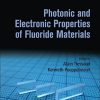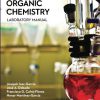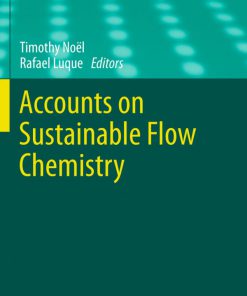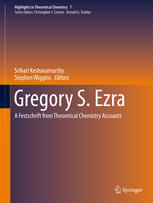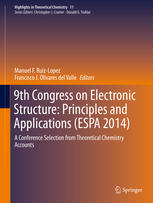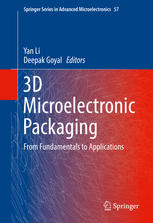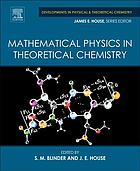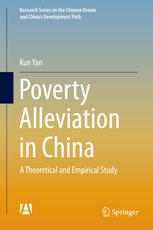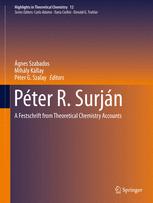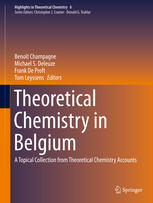Guosen Yan A Festschrift from Theoretical Chemistry Accounts 1st Edition by Hua Guo, Daiquian Xie, Weitao Yang 3662478455 9783662478455
$50.00 Original price was: $50.00.$25.00Current price is: $25.00.
Guosen Yan: A Festschrift from Theoretical Chemistry Accounts 1st Edition by Hua Guo, Daiquian Xie, Weitao Yang – Ebook PDF Instant Download/DeliveryISBN: 3662478455, 9783662478455
Full download Guosen Yan: A Festschrift from Theoretical Chemistry Accounts 1st Edition after payment.
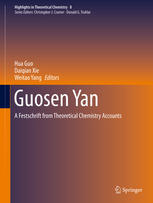
Product details:
ISBN-10 : 3662478455
ISBN-13 : 9783662478455
Author: Hua Guo, Daiquian Xie, Weitao Yang
In this Festschrift dedicated to the 85th birthday of Professor Guosen Yan, selected researchers in theoretical chemistry present research highlights on major developments in the field. Originally published in the journal Theoretical Chemistry Accounts, these outstanding contributions are now available in a hardcover print format, as well as a special electronic edition. This volume provides valuable content for all researchers in theoretical chemistry, and will especially benefit those research groups and libraries with limited access to the journal.
Guosen Yan: A Festschrift from Theoretical Chemistry Accounts 1st table of contents:
1 Publications of Professor Guosen Yan
Transition between direct gap and indirect gap in twodimensional hydrogenated honeycomb Six Ge1−x
Abstract
Keywords
1 Introduction
2 Methods and computational details
3 Results and discussions
4 Conclusions
Acknowledgments
References
A new ab initio potential energy surface and infrared spectra for the He–CS2 complex
Abstract
Keywords
1 Introduction
2 Computational details
2.1 Ab initio calculations
2.2 Analytical fi tting of the potential energy surface
2.3 Calculations of the rovibrational states
3 Features of potential energy surface
4 Rovibrational bound states
5 Infrared spectra
6 Conclusions
Acknowledgments
References
Testing exchange – correlation functionals at fractional electron numbers
Abstract
Keywords
1 Introduction
2 Theoretical background
3 Illustrative examples and discussion
4 Conclusions
References
Stereoselective inclusion mechanism of ketoprofen into β -cyclodextrin: insights from molecular dyn
Abstract
Keywords
1 Introduction
2 Computational details
3 Results and discussion
4 Conclusion
References
State-to-state quantum dynamics of the N(4S) + C2(X˜1Σ+) → CN(X˜2Σ+) + C(3P) reaction
Abstract
Keywords
1 Introduction
2 Computational details
2.1 Potential energy surface
2.2 Vibrational energy levels
2.3 Quantum dynamics
3 Results and discussion
4 Conclusions
References
Mechanism and regioselectivity of the cycloaddition between nitrone and dirhodium vinylcarbene catal
Abstract
Keywords
1 Introduction
2 Computational methods
2.1 Models
2.2 Computational details
3 Results and discussion
3.1 Reaction to produce the real product 4
3.2 Reaction to produce isomer 5
4 Conclusion
5 Supporting information
Acknowledgments
References
Theoretical study on the working mechanism of a reversible light-driven rotary molecular motor
Abstract
Keywords
1 Introduction
2 Computational methods
3 Results and discussions
3.1 The (3‘S)-(P)-1 and (3‘R)-(M)-1 isomers
3.2 FC relaxation and potential energy curves
3.3 Working cycles and transition states
4 Conclusions
Acknowledgments
References
The combined CASPT2 and CASSCF studies on photolysis of 3-thienyldiazomethane and subsequent reactio
Abstract
Keywords
1 Introduction
2 Computational details
3 Results and discussion
3.1 The lowest-lying electronic states
3.2 Formation of the singlet 3-thienylcarbene
3.3 Formation of the triplet 3-thienylcarbene
3.4 Formation of α-thial-methylenecyclopropene
4 Summary
Acknowledgments
References
Analysis of a failure of the CC2 coupled-cluster method for bond lengths of SnO and PbO
Abstract
Keywords
1 Introduction
2 Theory
3 Results and discussion
4 Conclusion
Acknowledgments
References
Electrostatic potentials of camptothecin and its analogues
Abstract
Keywords
1 Introduction
2 Methods
3 Results and discussions
3.1 Geometry and energy properties
3.2 Electrostatic potential and dipole moment
4 Concluding remarks
Acknowledgments
References
A comparison study of the H + CH4 and H + SiH4 reactions with eight-dimensional quantum dynamics: no
Abstract
Keywords
1 Introduction
2 Methodology
2.1 The coordinate system
2.2 The model Hamiltonian
2.3 Wavefunction and reaction fl ux
2.4 Analysis of the reaction path Hamiltonian
3 Results
3.1 Basis set
3.2 Total reaction probabilities
3.3 Integral cross sections and thermal rate constants
4 Discussion
5 Conclusions
Acknowledgments
References
How the molecular face and the interaction vary as H atom approach H2 molecule
Abstract
Keywords
1 Introduction
2 Formalism of the molecular face ( MF )
2.1 The potential acting on one electron in a molecule and its 3D representation
2.2 Defi nition of molecular intrinsic characteristic contour( MICC )
2.3 Program and calculation
3 Results and discussion
3.1 3D Representations of the PAEM and MF : HI molecule as an example
3.2 The changing pictures of the molecular face ( MF )for the reaction H2 + H → H + H2 at differen
3.3 Conversion between van der Waals interaction and chemical bonding based on PAEM -MO diagram
4 Summary
Acknowledgments
References
State-to-state quantum versus classical dynamics study of the OH + CO → H + CO2 reaction in full d
Abstract
Keywords
1 Introduction
2 Theory
3 Results
4 Conclusions
Acknowledgments
References
NO adsorption and transformation on the BaO surfaces from density functional theory calculations
Abstract
Keywords
1 Introduction
2 Computational details
3 Results and discussion
3.1 One NO adsorption
3.2 Two NO adsorption
3.3 N2O32− dissociation
4 Concluding remarks
Acknowledgments
References
Microwave and infrared spectra of CO–(pH2)2, CO–(oD2)2, and mixed CO–pH2–He trimers
Abstract
Keywords
1 Introduction
2 Computational methods
2.1 Geometry and reduced-dimension treatment
2.2 Hamiltonian and basis functions
3 Results and discussion
3.1 Features of the fi ve-dimensional potential energysurface
3.2 Rovibrational energy levels and band origin shifts
3.3 Predicted microwave and infrared transitions
3.4 The wave functions and “ solvent ” density distributions
4 Conclusions
Acknowledgments
References
Numerical solution of solvent reorganization energy and its application in electron transfer reactio
Abstract
Keywords
1 Introduction
2 Theory
3 Results and discussion
4 Conclusion
References
Adsorption of water molecules on sodium chloride trimer
Abstract
Keywords
1 Introduction
2 Experimental details and theoretical methodologies
2.1 Photoelectron spectroscopy
2.2 Integrated tempering sampling (ITS) method
2.3 Simulation details
3 Results and discussions
3.1 The experimental and theoretical vertical detachment energies
3.2 Structures of (NaCl)3−(H2O)n
3.2.1 Typical minimal energy structures of (NaCl)3−
3.2.2 Typical minimal energy structuresof (NaCl)3−(H2O)n (n = 1–6)
3.3 Structures of (NaCl)3(H2O)n
3.3.1 Typical minimal energy structures of (NaCl)3(H2O)n(n = 0–2)
3.3.2 Typical minimal energy structures of (NaCl)3(H2O)n(n = 3–7)
3.4 Water binding energies of the lowest energy structures
4 Concluding remarks
Acknowledgments
References
Thermal decomposition of FOX-7 studied by ab initio molecular dynamics simulations
Abstract
Keywords
1 Introduction
2 Computational details
3 Results and discussion
3.1 Overview of the reactions
3.2 Generated molecular species
3.3 Reaction network and mechanisms
4 Conclusion
Acknowledgments
References
Hemibond complexes between H2S and free radicals (F, Cl, Br, and OH)
Abstract
Keywords
1 Introduction
2 Theory
3 Results and discussion
4 Conclusions
Acknowledgments
References
DFT and TDDFT studies on osmacycle dyes with tunable photoelectronic properties for solar cells
Abstract
Keywords
1 Introduction
2 Computational details
2.1 Theoretical background
2.2 Computational methods
3 Results and discussion
3.1 Structural and optical properties of osmium polycyclic aromatic complexes
3.2 Effects of structural modifi cation on electronic and optical properties
4 Conclusion
Acknowledgments
References
First-principles investigations on the anisotropic charge transport in 4,4‘-bis((E)-2-(naphthalen-
Abstract
Keywords
1 Introduction
2 Methodology
3 Results and discussion
3.1 Geometric comparison
3.2 Electronic structure
3.3 Reorganization energy
3.4 Transfer integral
3.5 Electric fi eld and charge carrier density dependences of drift mobility
3.6 Anisotropic property
4 Conclusion
Acknowledgments
References
Iron carbonyl thioboronyls: effect of substitution of sulfur for oxygen in the viability of binuclea
Abstract
Keywords
1 Introduction
2 Theoretical methods
3 Results and discussion
3.1 Binuclear Fe2(BS)2(CO)8 structures
3.1.1 Unbridged Fe2(BS)2(CO)8 structures
3.1.2 Bridged Fe2(BS)2(CO)8 structures
3.2 Mononuclear Fe(BS)(CO)4 and Fe(BS)2(CO)3 structures
3.2.1 The tetracarbonyl Fe(BS)(CO)4
3.2.2 The tricarbonyl Fe(BS)2(CO)3
3.3 Vibrational frequencies
3.4 Symmetrical and unsymmetrical dissociation of Fe2(BS)2(CO)8 into mononuclear fragments
4 Summary
5 Supporting information
People also search for Guosen Yan: A Festschrift from Theoretical Chemistry Accounts 1st:
guosen ye gsk
guo yan
guo yan yun yan
yan gioseffi
yan gu eileen
Tags: Guosen Yan, Festschrift, Theoretical, Chemistry Accounts, Hua Guo, Daiquian Xie, Weitao Yang
You may also like…
Science (General)
Chemistry
Isaiah Shavitt: A Memorial Festschrift from Theoretical Chemistry Accounts 1st Edition Ron Shepard
Politics & Philosophy - Government & Politics


